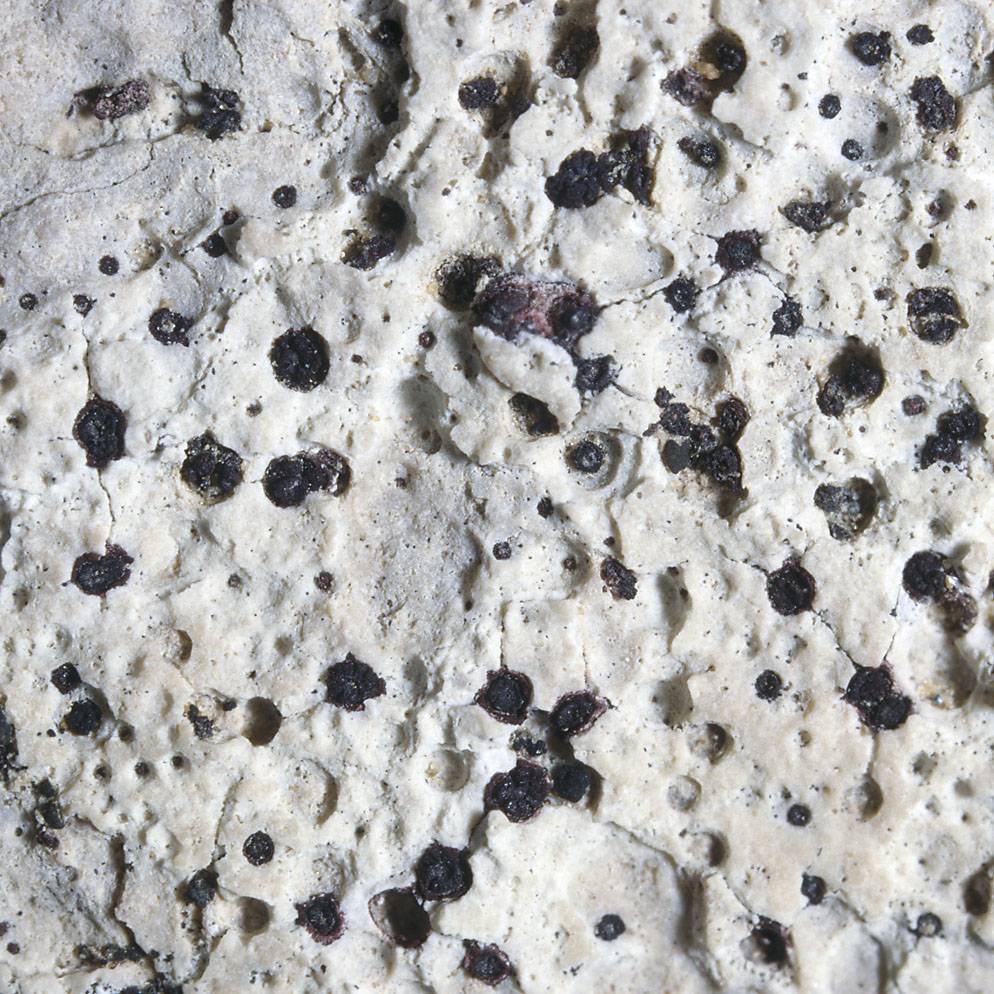
Consortium of Lichen Herbaria
- building a Global Consortium of Bryophytes and Lichens as keystones of cryptobiotic communities -
- Home
- Search
- Images
- Species Checklists
- US States: O-Z >
- US National Parks
- Central America
- South America
- US National Parks
- Southern Subpolar Region
|
Family: Verrucariaceae |
Nash, T.H., Ryan, B.D., Gries, C., Bungartz, F., (eds.) 2007. Lichen Flora of the Greater Sonoran Desert Region. Vol 3. Life habit: lichenized Thallus: crustose, endolithic to thinly epilithic, continuous; prothallus present (dark, marginal) or absent surface: white, gray, bluish gray, grayish green or pale red, dull or shiny anatomy: upper cortex: prosoplectenchymatous, composed of mainly vertically arranged, loose hyphae medulla: composed of filamentous hyphae penetrating the disintegrated rock (pseudomedulla) photobiont: primary one Trebouxia, secondary photobiont absent; algal cells: irregularly dispersed or in clusters; lower cortex: lacking. Ascomata: perithecial, fully immersed in the rock, subglobose or broadly pear-shaped, with a short conical neck exciple: colorless to dark brown involucrellum: carbonaceous, lid-like, attached only to the uppermost levels of the exciple, horizontally spreading, flat or with slightly downturned margins, radially grooved to turn interascal filaments: gelatinizing early, lacking in mature ascomata ostiolar filaments: (periphyses) well developed, in dense cushions, simple, with a clavate terminal cell asci: fissitunicate, clavate, thin-walled, apically strongly thickened, with a non-amyloid wall, 8-spored ascospores: simple, hyaline, oblong, ellipsoidal or ovoid, biseriate, not sculptured, without halo or perispore, often poorly developed or lacking Conidiomata: unknown Secondary metabolites: none detected Geography: world-wide, mainly in warm-temperate regions Substrate: on limestone or dolomite. Notes: Bagliettoa is often included in Verrucaria, from which it is separable by its flat, lid-like, radially grooved or split involucrellum and the lack of paraplectenchymatous thallus tissues. The genus is very poorly known; the delimitation of the species is not fully understood yet. |
Powered by Symbiota









